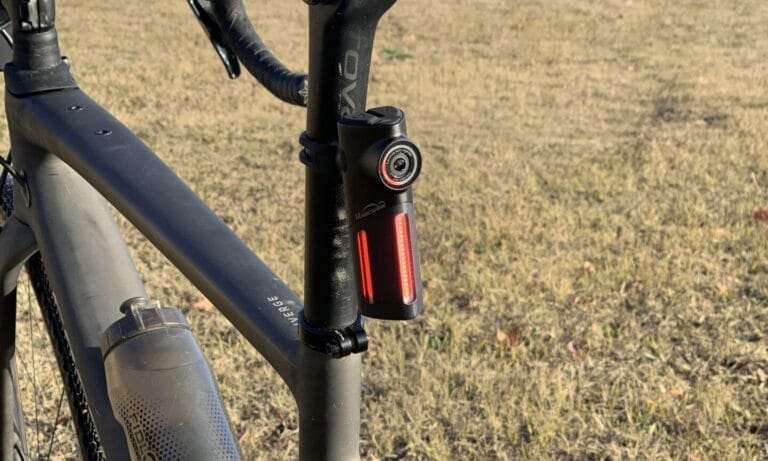The dreaded FTP test. I dread doing an FTP test so much I’ve even delayed writing about it. Recently, I came off a training block and performed an FTP test, so I’ve decided it was time to get it done. Follow along as I give you the low down on the FTP tests and why you should be doing them.
First, what is an FTP?
FTP stands for Functional Threshold Power and is defined as “the highest power a rider can maintain in a quasi-steady state without fatiguing.”
Which is basically an impossible task.
When the original researchers Andy Coggan and XXX performed their studies, they needed a way to relate a cyclist’s power output in Watts, which is very easy to measure with a power meter (Quarq Power Meter), to lactic acid build up. Thus a 60 min all out power test was believed to be a representative time to when this would happen.
New research has shown lactic acid build up now occurs within 45-70 mins depending on the athlete and depending on the sport. But measuring this build up directly isn’t practical for everyday training, thus the need to correlate power output to muscle fatigue.
And now, back to the impossible task. Most people can’t go out and do a full out steady-state effort for an hour. It’s impractical, causes too much stress on the body, and isn’t great for training purposes, thus the 20 min power test was developed. Although they had test subjects perform these 60 min efforts.
From these test efforts, they were able to determine that multiplying your 20 min normalized power by 0.95, you could a reasonable 60 min FTP value. Thus the 0.95 was a value that was found empirically from test subjects and might be slightly higher or lower for someone.
Side note. In cycling, the person with highest FTP doesn’t always win. FTP should be taken as a personal baseline used to improve ones fitness. I will get into some of the shortcomings of FTP values. Also, when comparing your FTP to someone else remember, power meters are only so accurate and the power from two power meter were calibrated in a lab under ideal conditions. Unless you have your power meter regularly bench calibrated (which I don’t anyone does), then it is hard to say how true the power output is.
The key to any good power meter is that day-after-day it is giving you close results and that based on your benchmark power (your FTP), you can perform your interval training and increase your performance. In the end, FTP is a static point used to create training zones which are meant to improve your cardiovascular system.
I don’t want to get to bog down with the science behind it, and as an engineer, I know you need to develop some sort of algorithm that can easily describe and predict a very complex process. As the British statistician George E. P. Box said, “All models are wrong, but some are useful.” And it is clear that this is a useful model since a lot cycling coaches, training apps, etc., use the Andy Coggan training method.
Is FTP the only test?
No. Two other popular tests are the Ramp Test and the CTS 8 min test. Both of these tests do a similar thing as the FTP test in that they are taking your
Before we get to wrapped up in numbers, training methods, Watts, etc., if you want to get fitter, faster, healthier, or whatever goal you are trying to achieve on the bike, you need to get out and ride. Riding consistently and gradually building your training load is going to make you faster. Just look at pro-riders from 15-, 20-, 30-years, and further back and you will realize that they were fast, and that they didn’t have the training methods or tools of nowadays.
You don’t need a power meter and you don’t even need a heart rate monitor. I can tell you from firsthand experience that getting faster does not require these things. Like many riders before me, my training consisted of long days in the saddle, hard group-ride efforts, and little structure. I went from a Cat 5 road cyclist to Cat 2 in two seasons.
Depending on your skill level and cycling goals, this will most likely only take you so far, especially now with so many riders at all levels using power meters/HRMs with structured training programs, specialized training is going to push a rider to a higher level. Also, looking back now, I realize that using a structured training program would have greatly improved my fitness. I think power meters, when used properly, holds a rider accountable and helps them from doing “junk” miles.
“Junk” miles include training in the wrong zones for too long or riding and excessive amount of time which can lead to undertraining in zones that need more improvement or overtraining and causing excess fatigue.
8-Min FTP test
The 8-min power test consists of riding two 8 min all out intervals with a short break in between the two intervals. A big benefit of an 8 min test is that pacing is less of a concern (which is typically an issue for less experienced riders during a 20-min power test) and full out power for 8 mins is more manageable. Pacing issues occur when nearing the end of a power test and a rider has an increased power surge for the last few minutes. Theoretically, one would hold a steady power for the entire 8- or 20-min power test.
Since this power test is much shorter a rider will rider at higher power, thus this test can demonstrate power VO2 max, help one track aerobic fitness when comparing the two efforts, and it used to extrapolate FTP values.
FTP is calculated by averaging your two 8 min intervals and multiplying the average by 0.90. This test assumes (most likely from empirical testing) that your 1 hr power is about 10% less than two 8 min efforts.
20-Min FTP Test
The original power test, the dreaded power test, the power test that one doesn’t speak its name, whatever you want to call it, is typically the Gold Standard for endurance, road, and criterium cyclists/racers.
A 20 min power test consists of a warmup period with different intervals followed by the 20 min effort and a cool down. If you have performed a few power tests and have an approximate value of what your FTP will be, aim to ride at that power value for the whole effort. Initially, it is going to be easy, but 20 mins in it gets hard. Therefore, even though it is easy at first stick with that value and don’t start out overly hard.
This is the main reason pacing is hard for less experienced riders. This is mainly because you aren’t sure what your abilities are, and not starting out at too high of power.
Some take-aways
Whatever power test method you choose, stick with it, continue training, and when you retest you power, you are bound to see fitness improvements. All these methods are theoretical based from empirical testing and won’t fit to every rider perfectly.
FTP has little value to sprint event track racers since most of their efforts are short and at VO2 efforts.
FTP values are just a baseline, which is used to develop training zones. These zones correspond to systems of the body. Here is a great article to help explain Training Zones.
Like Greg Lemond said, “It doesn’t get any easier, you just get faster.” This quote was regarding racing but is applicable to training as well. As your fitness increases, physically it is going to feel equally as hard or painful as before, but now you are performing at a higher level, i.e., going faster.
This article on FTP will lead into other training parameters like Intensity Factor (IF), Training Stress Score (TSS). I have already written about Normalized Power (NP) and how it is used for training.
Support JayLo Cycling
Did you find this post useful? If you have any questions, feel free to leave a comment below. If you have any suggestions of future reviews or things you would like to see in the future contact me. My reviews are thorough and often take a significant amount of time to produce. Please consider checking out my Instagram, YouTube, and Facebook accounts to show me support there. If you feel generous and have the ability, consider buying me a coffee to help support this site.
Some of the items can be purchased on amazon using my affiliate link. At no extra cost to you, using my link you will help support this site. Jason Lopez is a participant in the Amazon Services LLC Associates Program, an affiliate advertising program designed to provide means for sites to earn advertising fees by advertising and linking to Amazon.com.










1 thought on “Cycling Training: (FTP) Functional Threshold Power 3 Power Test Methods”
Pingback: SRAM Quarq DFour Cycling Power Meter Product Review: 5 Great Features - JayLo Cycling and Adventures